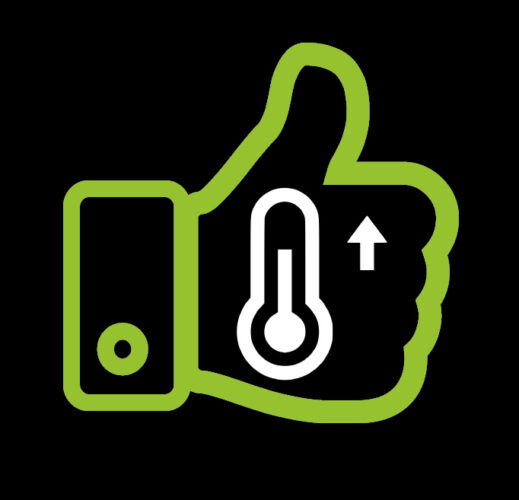The commercial building sector is responsible for a large proportion of greenhouse gas emissions in Québec, mainly due to energy-consuming and/or poorly maintained heating systems. Numerous solutions have been put in place to optimize the energy efficiency of these buildings, and eventually reduce greenhouse gas emissions and your bills!
Heating systems use two main energy sources: electricity and natural gas. Electricity lends itself to a variety of uses: air-conditioning, lighting, running equipment and auxiliary motors (pumps), while natural gas and other fossil fuels are essential for heating buildings and water.
In this article, we’ll look at the ways in which heating systems can be optimized to deliver effective energy savings without the need for major investment.
3 types of optimization are essential in terms of production, distribution and regulation.
- OPTIMIZATION IN TERMS OF PRODUCTION
The return temperature of water from a radiator has a direct impact on the boilers. For this reason, one of the most effective ways to promote energy savings, in terms of production, is to optimize the heating curve.
During the high season, the heating systems are usually fully loaded. Their power helps to compensate for any domestic hot water production or possible rapid recovery, in periods of intense cold. To regulate heating precisely and economically, the heating curve is one of the most efficient solutions.
Indeed, the heating curve has the property of controlling the temperature of the water in a heating circuit, depending on the outside temperature and the degree of insulation of the building. The temperature of the water coming from the boiler is systematically adjusted in accordance with the minimum temperature of the region, and thus meets the notion of “basic outdoor temperature”, which consists of a calculation of data used to define the heating losses of a particular city or region. To properly adjust the heating curve of a building, a few pieces of equipment are essential:
- A climate regulator attached to the boiler to determine the heating curve.
- A probe that calculates the outside temperature and transmits it to the climate regulator.
It is estimated that this measure would provide an opportunity to achieve energy savings in the range of 15% to 20%.
Our specialists in building energy optimization support and advise our customers in the selection of products compatible with their boiler and their needs, regardless of the model or brand. For the heating curve to lend itself perfectly to these, it must certainly be adjusted in several stages, taking care to change the settings gradually from one time to the next.
NEED HELP MAINTAINING YOUR HEATING SYSTEMS?
CALL ON BAULNE!
- TAKE CARE OF THE HOT WATER DISTRIBUTION
The pumps. The operating costs of pumps in the case of constant flow distribution, correspond approximately between 7% and 17% of the overall primary energy consumption of a heating system, since the electricity consumption of the pumps varies according to the flow of the water.
According to a study conducted by COSTIC (Comité Scientifique et Technique des Industries Climatiques), the energy produced by pumps can be reduced by 40% when hydraulic balancing of heating circuits is carried out, a method consisting of having a homogeneous temperature for all the rooms of the same building.
Insulating hot water distribution pipes. When the pipes are not properly insulated, the hot water is stripped of some of its heat between the production unit (the boiler) and its emitter (the radiator). It should be noted that insulation is much more effective when the pipes pass through the coldest rooms, such as the garage. In fact, this technique helps to save almost 3% of the total heating energy consumption.
- OPTIMIZATION IN TERMS OF REGULATION
Regulation aims to preserve the set temperature of a room, considering the heat inputs (cooking appliances, lighting, sun, etc.). Although there are several known practices, the best for optimal energy savings is undoubtedly centralized regulation.
Centralized regulation. The central control considers all the needs of the building, thanks to a room thermostat and/or an external temperature sensor.
Optimal heating programming. The regulation is completed by programming a heating system. The heating controller offers the possibility to decrease the set temperature to 18 degrees Celsius when the building is vacant. It is important to know that a set temperature that remains unchanged during periods of unoccupancy leads to an overconsumption of energy in the range of 5% to 30%.
WE OFFER BUILDING AUTOMATION SERVICES
What if your building became smart?
Article written in July 2019, modified on October 24, 2022























